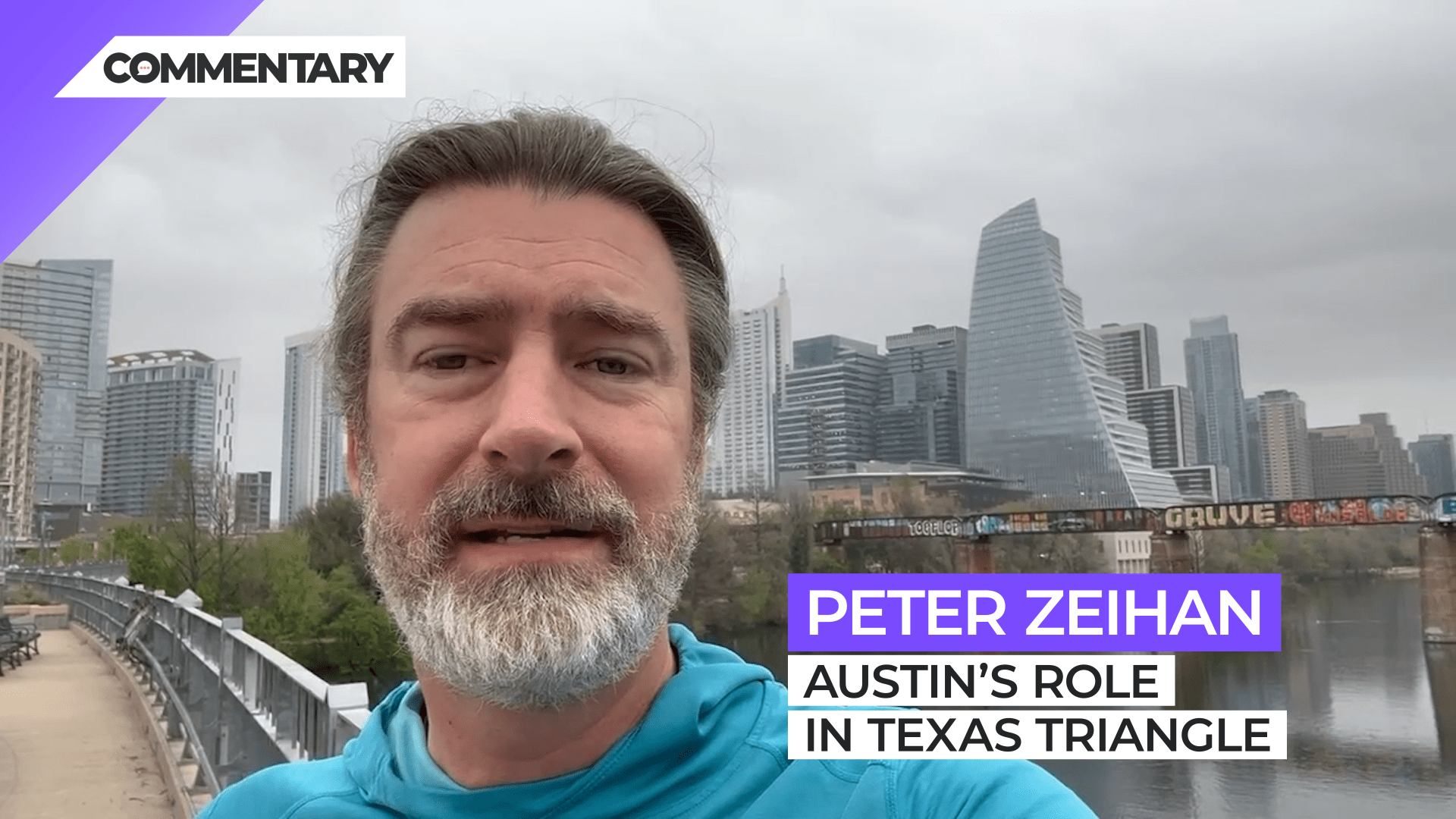
Commentary
-
Our commentary partners will help you reach your own conclusions on complex topics.
Hey everybody, Peter Zeihan here coming to you from the lar passenger bridge in downtown Austin. As some of you remember, this was my home for 20 odd years. And I am proud to say that the city is still doing strong. Austin is at the middle of what is called the Texas triangle, which has been the fastest growing economics and urban zone in the western hemisphere for about 25 years now. And the story is in the neighborhood. So Texas is a red state, so the taxes are low. In fact, in the state of Texas, there is no income tax at all. But this is a relatively Blue City. So it has a reasonably high level of city services. That sort of combination has really helped urban areas in a similar match places like Lexington, Kentucky or Atlanta, Georgia. But there’s more than that. The Texas triangle, as you might expect, has three major urban zones of which Austin is not technically one. The big three are San Antonio Houston and Dallas. Houston is obviously an energy and heavy manufacturing hub. Dallas is an automotive and aerospace hub. Both of them are financial centers in their own way. And then San Antonio has lower cost of living and lower labor costs. And so is great at mass manufacturing, especially in automotive. Where Austin plugs in is on the higher end. There’s an area to the northwest of town called Silicon Hills, which as you might guess, is kind of an echo of Silicon Valley. But where Silicon Valley focuses on the base research, and being a hotbed of core tech innovation, Austin takes a lot of that research and then turns it into operationalized development plans, which are then applied throughout the rest of the Texas triangle. So it’s not that awesome to do this by itself. But Austin plugged into the triangle makes it the perfect interlocutor for everything for turning modern manufacturing into reality. And if you see kind of behind me, you know, there’s quite a skyline here. This is a city that as recently as 1985, only had about 600,000 people and now there are over two and a half million in the entire metro. And all of the buildings in the immediate background. Were not there when I moved to Austin back in 2000. And the ones a little bit further back. Now maybe two thirds of those are new in the last 20 years. So Austin has been one of the top 10 fastest growing urban centers in the Western Hemisphere now for almost 30 years straight. And even though it is the most expensive city in Texas, and even though the cost of living has now risen above the national average. It has a long way to grow because it can physically grow to the northwest, the North, the Northeast, the east, the southeast, the South and the Southwest very easily. And the land just to the west where I used to live is called the hill country. And as you might guess it’s hilly but not mountainous. This is an advantage that a lot of the Texas cities have they can just physically expand with reasonably few restrictions. Talk to you guys later. Bye
-
Hurricane Helene hits US coast, Appalachia and beyond
Hurricane Helene hit Florida and Georgia overnight between Sept. 26 and 27 as a Category 4 hurricane, and accompanying storms will continue reaching deeper into the continental United States today. Dangerous flash flooding from the hurricane, known as storm surge, was some of the worst flooding that the Tampa Bay area has ever seen, and… -
Israel holds upper hand against Lebanon, Hezbollah and Iran
On Wednesday, Sept. 25, Hezbollah launched a ballistic missile at Tel Aviv in retaliation for Israel’s explosive pager attack that blew up devices across Lebanon. Although Israel’s defense systems intercepted the surface-to-surface missile, the attempted strike on Tel Aviv marked a significant escalation by Hezbollah. Since the siege on Gaza began, shortly after the Oct. 7, 2023,… -
The Sinaloa Cartel civil war
Fears of a civil war within the Sinaloa Cartel are growing as violence between competing factions within the cartel continues. The Mexican Army has dispatched around 600 elite troops to Sinaloa to help quell those fears, in addition to roughly 2,200 regular soldiers and National Guard. Watch the above video as Straight Arrow News contributor… -
New Ukrainian weapons hit Russia where it hurts
Ukrainian drones struck a major Russian ammunition depot, triggering a massive explosion that was captured on camera. According to the Ukrainian military, 2,000 tons of munitions had arrived at the depot before the attack. Over the past two years, Ukraine has significantly increased its domestic drone production, allowing it to scale up attacks on military… -
Weighing social costs vs. economic benefits on immigration
Global human migration is one of the defining elements of our current historical era, according to the United Nations. Migrants face both the incentives to leave — forced out by climate change, crime and corruption, extreme poverty or violence — and incentives for where to go, based on available job opportunities and so on. Migration…
Latest Stories
-
 Getty Images
Getty Images
Jay-Z sues sexual assault accuser and lawyer, says Roc Nation lost $20 million
-
 Getty Images
Getty Images
Democrats want DOJ attorney who dropped Eric Adams case investigated
-
 Getty Images
Getty Images
Millions of users’ personal data shared with US law enforcement: Report
-
 Getty Images
Getty Images
Republican leaders urge a pause on town hall meetings
-
 Getty Images
Getty Images
Media spins Trump, Zelenskyy Oval Office meeting: Bias Breakdown
Popular Opinions
-
In addition to the facts, we believe it’s vital to hear perspectives from all sides of the political spectrum.
Latest Opinions
In addition to the facts, we believe it’s vital to hear perspectives from all sides of the political spectrum. We hope these different voices will help you reach your own conclusions.
The opinions published in this section are solely those of the contributors and do not reflect the views of Straight Arrow News.





















Latest Commentary
We know it is important to hear from a diverse range of observers on the complex topics we face and believe our commentary partners will help you reach your own conclusions.
The commentaries published in this section are solely those of the contributors and do not reflect the views of Straight Arrow News.
Dr. Frank Luntz
Pollster and Political Analyst‘Biased’: What Americans think of ‘mainstream media’
‘Getting rid of them’: Americans discuss Trump and immigration
‘Woke’: Why some Biden 2020 voters backed Trump in 2024